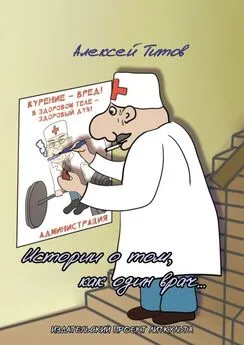Шервин Нуланд - Врачи [Восхитительные и трагичные истории о том, как низменные страсти, меркантильные помыслы и абсурдные решения великих светил медицины помогли выжить человечеству] [litres]
- Название:Врачи [Восхитительные и трагичные истории о том, как низменные страсти, меркантильные помыслы и абсурдные решения великих светил медицины помогли выжить человечеству] [litres]
- Автор:
- Жанр:
- Издательство:Литагент 5 редакция
- Год:2020
- Город:Москва
- ISBN:978-5-04-097126-8
- Рейтинг:
- Избранное:Добавить в избранное
-
Отзывы:
-
Ваша оценка:
Шервин Нуланд - Врачи [Восхитительные и трагичные истории о том, как низменные страсти, меркантильные помыслы и абсурдные решения великих светил медицины помогли выжить человечеству] [litres] краткое содержание
Врачи [Восхитительные и трагичные истории о том, как низменные страсти, меркантильные помыслы и абсурдные решения великих светил медицины помогли выжить человечеству] [litres] - читать онлайн бесплатно ознакомительный отрывок
Интервал:
Закладка:
Sarton, G. Galen of Pergamon. Lawrence: Univ. of Kansas Press, 1954.
Siegal, R. E. Galen’s System of Physiology and Medicine. Basel: S. Karger, 1968.
Singer, C. Greek Biology and Greek Medicine. Oxford: Clarendon Press, 1922.
–-. The Evolution of Anatomy. New York: Knopf, 1925.
–-. Galen and Anatomical Procedures. London: Geoffrey Cumberlege, 1956.
Slater, P. E. Letter to the editor. N Eng. J. Med. 313: 455 (1985).
Smith, W. O. The Hippocratic Tradition. Ithaca, N.Y.: Cornell Univ. Press, 1979.
Temkin, O. Galenism: Rise and Decline of a Medical Philosophy. Ithaca, N.Y.: Cornell Univ. Press, 1973.
–-. “On Galen’s Pneumatology,” The Double Face of Janus. Baltimore: Johns Hopkins Press, 1977.
Toledo-Pereyra, L. H. “Galen’s Contribution to Surgery.” J. Hist. Med. 28: 357–375 (1973).
Walsh, J. “Galen’s Discovery and Promulgation of the Function of the Recurrent Laryngeal Nerves.” Ann. Med. Hist. 8: 176–184 (1926).
–-.”Galen Clashes with the Medical Sects at Rome.” Med. Life 35: 408–443 (1928).
–-. “Galen’s Writings and Influences Inspiring Them.” Ann. Med. Hist. 6 (N.S.): 1–30, 143–149 (1934); 7(N.S.): 428–437, 570–589 (1935); 8 (N.S.): 65–90 (1936); 9 (N.S.): 34–51 (1937).
Walzer, R. Galen on Jews and Christians. London: Oxford Univ. Press, 1949.
Wilson, L. G. “Erasistratus, Galen, and the Pneuma.” Bull. Rist. Med. 33: 293–314 (1959).
Castiglione, A. “Three Pathfinders of Science in the Renaissance.” Bull. Med. Lib. Ass. 31: 203–207 (1943).
Chastel, A. “Treatise on Painting.” In L. Reti, The Unknown Leonardo. New York: McGraw-Hill, 1974.
Cushing, H. A Biobibliography of Andreas Vesalius. and ed. London: Archon, 1962.
Edelstein, L. “Andreas Vesalius, the Humanist.” Bull. Hist. Med. 14: 547–561 (1943).
Fisch, M. H. “Vesalius and His Book.” Bull. Med. Lib. Ass. 31: 208–221 (1943).
Garrison, F. H. “In Defense of Vesalius.” Bull. Soc. Med. Hist. Chicago 4: 47–65 (1916).
Hoolihan, C. “The Transmission of Greek Medical Literature from Antiquity to the Renaissance.” Med. Heritaqe 2: 430–442 (1985).
Jones, T. “The Artists of Vesalius’ Fabrica.” Bull. Med. Lib. Ass. 31: 222–227 (1943).
Keele, K. D. “Leonardo da Vinci’s Influence on Renaissance Anatomy.” Med. Hist. 8: 360–370 (1964).
Klebs, A. C. “Leonardo da Vinci and His Anatomical Studies.” Bull. Soc. Hist. Med. Chicago 4: 66–83 (1916).
Lambert, S. W., Wiegand, W., and Ivins, W. M. Three Vesalian Essays. New York: Macmillan, 1952.
O’Malley, C. D. Andreas Vesalius of Brussels. Berkeley: Univ. of Cal. Press, 1964.
–-. “Andreas Vesalius (1514–1564), In Memoriam.” Med. Hist. 8: 299–308 (1964) and Saunders, J. B. de C. M. Leonardo da Vinci on the Human Body. New York: Henry Schuman, 1952.
Petrucelli, R. J. “Giorgio Vasari’s Attribution of the Vesalian Illustrations to Jan Stephan of Calcar: A Further Examination.” Bull. Hist. Med. 45: 29–37 (1971).
Roth, M. Andreas Vesalius Bruxellensis. Berlin: Georg Reimer, 1892.
Saunders, J. B. de C. M., and O’Malley, C. D. The Illustrations from the Works of Andreas Vesalius of Brussels. Cleveland: World, 1950.
Schultz, B. Art and Anatomy in Renaissance Italy. Ann Arbor: UMI Research Press, 1982.
Sigerist, H. E. “Commemorating Andreas Vesalius.” Bull. Hist. Med. 14: 541–546 (1943).
Singer, C. The Evolution of Anatomy. New York: Knopf, 1925.
Streeter, E. C. “Vesalius at Paris.” Yale J Biol. Med. 16: 121–128 (1943).
Vesalius, A. The Epitome of His Book on the Fabric of the Human Body. Trans. by L. R. Lind. New York: Macmillian, 1949.
Washburn, W. H. “Galen, Vesalius, Da Vinci-Anatomists.” Bull. Soc. Med. Hist. Chicago 4: 1–17 (1916).
Zilboorg, G. “Psychological Sidelights on Andreas Vesalius.” Bull. Hist. Med. 14: 562–575 (1943).
Anson, B. J. “The Ear and the Eye in the Collected Works of Ambroise Pare, Renaissance Surgeon to Four Kings of France.” Trans. Am. Acad. Ophthal. Otol. 74: 249–277 (1970).
Doe, J. A Bibliography of the Works of Ambroise Pare. Chicago: Univ. of Chicago Press, 1937.
Garrison, F. H. An Introduction to the History of Medicine. 4th ed. Philadelphia: Saunders, 1929.
Gibson, T. “The Prostheses of Ambroise Pare.” Brit. J. Plast. Surge 8: 3~ (1955).
Hamby, W. B., ed. The Case Reports and Autopsy Records of Ambroise Pare. Springfield: Charles C. Thomas, 1960.
–-. Ambroise Pare, Surgeon of the Renaissance. St. Louis: Warren H. Green, 1967.
Hill, B. H. “Ambroise Pare: Sawbones or Scientist.” J. Hist. Med. 15: 45–58 (1960).
Malgaigne, J. F. Surgery and Ambroise Pare. Trans. by W. B. Hamby. Norman: Univ. of Oklahoma Press, 1965.
Packard, F. R. Life and Times of Ambroise Pare. New York: Paul B. Hoeber, 1921.
Pare, A. The Workes of That Famous Chirurgeon Ambrose Parey. Trans. by T. Johnson. London: Cotes and Young, 1634.
–-. The Apologie and Treatise. Trans. by G. Keynes. London: Falcon Educational Books, 1951. (Birmingham: Classics of Medicine Lib., 1984.)
–-. Ten Books of Surgery with the Magazine of Instruments Necessary for It. Trans. by R. W. Linker and N. Womack. Athens: Univ. of Georgia Press, 1969.
Sigerist, H. E. “Ambroise Pare’s Onion Treatment of Burns.” Bull. Hist. Med. 15: 143–149 (1944).
Singer, D. W. Selectionsfrom the Works of Ambroise Pare. London: John Bale Sons and Danielsson, 1924.
Wangensteen, O. H., Wangensteen, S. D., and Klinger, C. F. “Wound Management of Ambroise Pare and Dominique Larrey, Great French Military Surgeons of the 16th and 19th Centuries.” Bull. Hist. Med. 46: 207–234 (1972).
Bylebyl, J. “The Growth of Harvey’s De Motu Cordis.” Bull. Hist. Med. 47: 427–470 (1973).
–-. “William Harvey, a Conventional Medical Revolutionary.” J.A.M.A. 239: 1295–1298 (1978).
–-. William Harvey and His Age: The Professional and Social Context of the Discovery of the Circulation. Baltimore: Johns Hopkins Press, 1979.
Cohen, B. “The Germ of an Idea, or, What Put Harvey on the Scent?” J. Hist. Med. 12: 102–105 (1957).
Comroe, J. H. “Harvey’s 1651 Perfusion of the Pulmonary Circulation of Man.” Circulation 65: 1–3 (1982).
Franklin, K. J. “On Translating Harvey.” J. Hist. Med. 12: 114–119 (1957).
–-. William Harvey, Englishman. London: MacGibbon and Kee, 1961.
Fulton, J. F. Michael Servetus, Humanist and Martyr. New York: Herbert Reichner, 1953.
Graham, P. W. “Harvey’s De Motu Cordis: The Rhetoric of Science.” J. Hist. Med. 33: 469–476 (1977).
Harvey, W. Anatomical Studies on the Motion of the Heart and Blood. Trans. by Chauncey D. Leake. Springfield: Charles C. Thomas, 1931.
–-. Anatomical Studies on the Motion of the Heart and Blood. Trans. G. Keynes. Birmingham: Classics of Medicine Lib., 1978.
Herringham, W. Circumstances in the Life and Times of William Harvey. Oxford Univ. Press, 1929.
Jones, A. M. “Dogma and Experiment in Harvey’s Time.” Brit. Ht. J. 19: 448–456 (1957).
Keele, K. D. “William Harvey: The Man and the College of Physicians.” Med. Hist. 1:265–278 (1957).
–-. William Harvey, the Man, the Physician, and the Scientist. London: Thos. Nelson & Sons, 1965.
Keynes, G. L. The Personality of William Harvey. Cambridge: Cambridge Univ. Press, 1949.
–-. The Life of William Harvey. Oxford: Oxford Univ. Press, 1966.
O’Malley, C. D. Michael Servetus. Philadelphia: Am. Phil. Soc., 1953.
Osler, W. The Growth of Truth as Illustrated in the Discovery of the Circulation of the Blood. Harveian Oration, 1906. London: Henry Frowde, 1906.
Pagel, W. “The Philosophy of Circles-Cesalpino-Harvey.” J. Hist. Med. 12: 140–157 (1957).
–. William Harvey’s Biological Ideas: Selected Aspects and Historical Background. New York: Hafner, 1967.
Payne, L. M. “Sir Charles Scarburgh’s Harveian Oration, 1662.” J. Hist. Med. 12: 158–164 (1957).
Pickering, G. “William Harvey, Physician and Scientist.” Brit. Med. J. 2: 1615–1619 (1964).
Power, D. William Harvey. New York: Longmans, Green, 1897.
Sigerist, H. E. “Wilham Harvey’s Position in the History of European Thought.” In F. Marti-Ibanez, ed., Henry E. Sigerist on the History of Medicine. MD Publications, 1960.
Whitteridge, G. William Harvey and the Circulation of the Blood. London: MacDonald, 1971.
Zeman, F. D. “The Old Age of William Harvey.” Arch. Int. Med. III: 829–834 (1963).
Bell, W. J. john Morgan, Continental Doctor. Philadelphia: Univ. of Pa. Press, 1965.
Castiglioni, A. “G. B. Morgagni and the Anatomico-Pathological Conception of the Clinic.” Proc. Roy. Soc. Med. 28: 375–378 (1934).
Gairdner, W. T. “The Progress of Pathology.” Brit. Med. J. 2: 515–517 (1874).
Jarcho, S. “Giovanni Battista Morgagni: His Interests, Ideas, and Achievements.” Bull. Rist. Med. 22: 503–527 (1948).
–-. “Morgagni and Auenbrugger in the Retrospect of Two Hundred Years.” Bull. Hist. Med. 35: 489–496 (1961).
–-. The Clinical Consultations of Giambattista Morgagni. Boston: Francis A. Countway Lib. of Med., 1984.
Klemperer, P. “Pathologic Anatomy at the End of the Eighteenth Century.” J. Mt. Sinai Hosp. 24: 589–603 (1957).
–-. “The Pathology of Morgagni and Virchow.” Bull. Hist. Med. 32: 24–38 (1958).
–-. “Morbid Anatomy Before and After Morgagni.” Bull. N. Y Acad. Med. 37: 741–760 (1961).
Morgagni, G. B. The Seats and Causes of Diseases Investigated by Anatomy. Trans. by B. Alexander. London: Millar and Cadell, 1769. (Birmingham: Classics of Medicine Lib., 1983.)
Morgan, J. The journal of Dr. john Morgan. Philadelphia: Lippincott, 1907.
Nuland, S. B. Giovanni Morgagni and the New Medicine. Birmingham: Classics of Medicine Lib., 1983.
Pottle, F. A. James Boswell, The Earlier Years: 1740–1769. New York: McGraw-Hill, 1966.
Steven, J. L. Morgagni to Virchow: An Epoch in the History of Medicine. Glasgow: Alexander MacDougall, 1905.
Tedeschi, C. G. “Giovarmi Battista Morgagni, the Founder of Pathologic Anatomy.” Boston Med. Quart. 12: 112–125 (1961).
–-. The Pathology of Bonet and Morgagni: A Historical Introduction to the Autopsy.” Hum. Path. 5: 601–603 (1974).
Virchow, R. “Morgagni and the Anatomic Concept.” Translation. Bull. Hist. Med. 7: 975–990 (1939).
Yonace, A. H. “Morgagni’s Letters.” J. Roy. Soc. Med. 73: 145–149 (1980).
Adams, J. Memoirs of the Life and Doctrines of the Late John Hunter, Esq. London: J. Callow & J. Hunter, 1818.
Austin, F., and Jones, B. “William Clift: The Surgeon’s Apprentice.” Ann. Roy. Coil. Surge 60: 261–265 (1978).
Beekman, F. “The Self-Education of Young John Hunter.” J. Hist. Med. 6: 506–515 (1951).
Brain, R. “The Neurology of John Hunter’s Last Illness.” Brit. Med. J. 2: 1371–1373 (1952).
Читать дальшеИнтервал:
Закладка:
![Обложка книги Шервин Нуланд - Врачи [Восхитительные и трагичные истории о том, как низменные страсти, меркантильные помыслы и абсурдные решения великих светил медицины помогли выжить человечеству] [litres]](/books/1065950/shervin-nuland-vrachi-voshititelnye-i-tragichnye-is.webp)
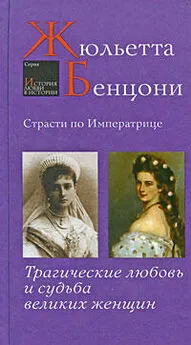
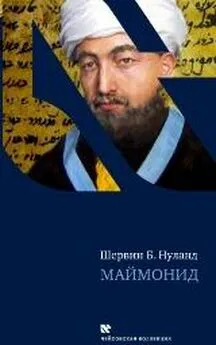
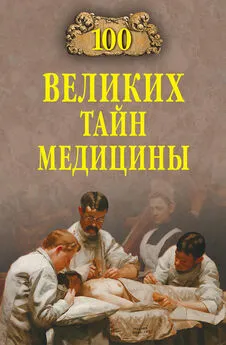
![Виктор Мишин - Выжить вопреки [litres]](/books/1076659/viktor-mishin-vyzhit-vopreki-litres.webp)
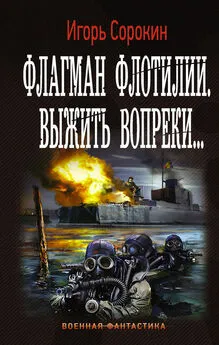
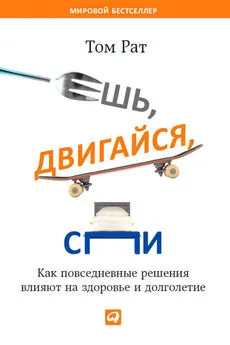
![Сергей Беркут - Выжить только с тобой [litres самиздат]](/books/1148968/sergej-berkut-vyzhit-tolko-s-toboj-litres-samizd.webp)

